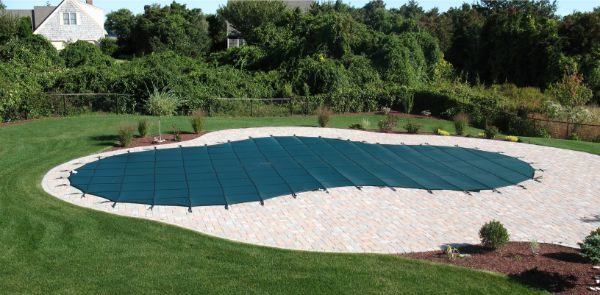
When it’s finally time to close your pool for the season, it’s important to make sure that the proper steps are taken. Properly winterizing your pool protects it from any potential damage that harsh weather conditions could bring. Take these steps to ensure that your pool survives the winter!
1. Clean the Pool
The first step to preparing your facility’s pool for winter is to get it as clean as possible. Your pool will be idle for months, so there shouldn’t be any lingering debris floating around the entire time. Cleaning the pool helps prepare it to be balanced, and makes opening the pool next year a much easier process.
Scrub
First, scrub the pool’s walls and floor with a pool brush. This should be done thoroughly, because it won’t be scrubbed again until it’s time to open your pool next year.
If your pool has symptoms of algae, you can also use an algae brush. This disturbs any blooms so that they’re more susceptible to treatment chemicals.
Vacuum
Next, vacuum the pool. Vacuuming removes any sediment and debris that were loosened during the scrubbing.
2. Test the Water
After all debris has been removed from your facility’s pool, the water will need to be tested. Use a test kit or have your local pool professionals take a sample for testing. All chemical levels should be properly balanced. Balanced water helps protect the pool from corrosion and scale build-up that can occur during the time that the pool is closed.
When balancing your pool, keep in mind that chlorine levels should be below 5 parts per million (ppm). If there is too much chlorine in the water, it may destroy other necessary additives.
3. Add Winterizing Chemicals
After your water is properly balanced, add any other necessary winterizing chemicals. These additional chemicals will help prepare and protect your facility’s pool throughout winter.
Some winterization chemicals may not be necessary for your pool. Your facility’s location and the type of water your pool has will determine which chemicals your pool needs. It’s best to consult with a pool professional to help decide which winterization chemicals are needed.
Algaecide
Adding a dose of algaecide can prevent algae growth and reproduction throughout the off season. If your pool cover has a mesh panel or another way for debris to enter the water, add a double dose.
Metal Sequestrant
If your water has high levels of metal (ex: water that comes from a well), add metal sequestrant when closing. Doing this suspends any metals in the water so that they don’t settle onto pool surfaces and cause stains.
Enzymes
Adding pool enzymes can help take some of the burden off of algaecide by attacking organic contaminants.
4. Shock Your Pool
Shock your pool one final time before covering it for the winter. Be sure to carefully follow the correct procedure to avoid any chemical mishaps. It’s important that the shock is done properly so that it can destroy any lingering pool contaminants and bacteria.
5. Lower the Water Level
Lowering your pool’s water level prevents freeze damage and overflow. The pool’s water level should be below the tile border or at the bottom edge of the skimmer. Whichever of the two is lower will determine where your pool’s water level should be.
6. Backwash, Clean Filter & Pump
Debris and bacteria shouldn’t be left sitting in your filter all winter. Clean debris out of your pool’s equipment before you close for the year so you can start next pool season with a clean filter.
7. Blow Out the Lines
The next step to winterize your facility’s pool is to remove every last bit of water from the lines, pump, and filter. Doing this prevents fractures and cracks caused by ice in the lines and equipment. This is a delicate process, which if not done properly could cause serious, expensive damage. We recommend that blowing out the lines be done only by a professional.
If you have trouble removing every bit of water from the lines, you can add antifreeze to help prevent any leftover water from freezing.
8. Remove and Store Pool Accessories
Remove handrails, ladders, and diving boards from the pool. Clean these accessories thoroughly and store them in a dry location during the colder months.
9. Install the Cover
The last step to winterize your facility’s pool is to cover it with a safety cover. Installing a safety cover helps protect your pool from water, debris, and anything else that harsh winter weather could blow into your pool.
Winterizing your pool helps protect it’s integrity throughout the winter months. This process is important because it helps prevent damage and maintain your pool’s water quality throughout the winter. Overall, taking these steps to winterize your pool leads to an easier, less expensive, less time-consuming opening process for next year. If your facility needs help winterizing your pool, we can help! Contact us to schedule a consultation.





